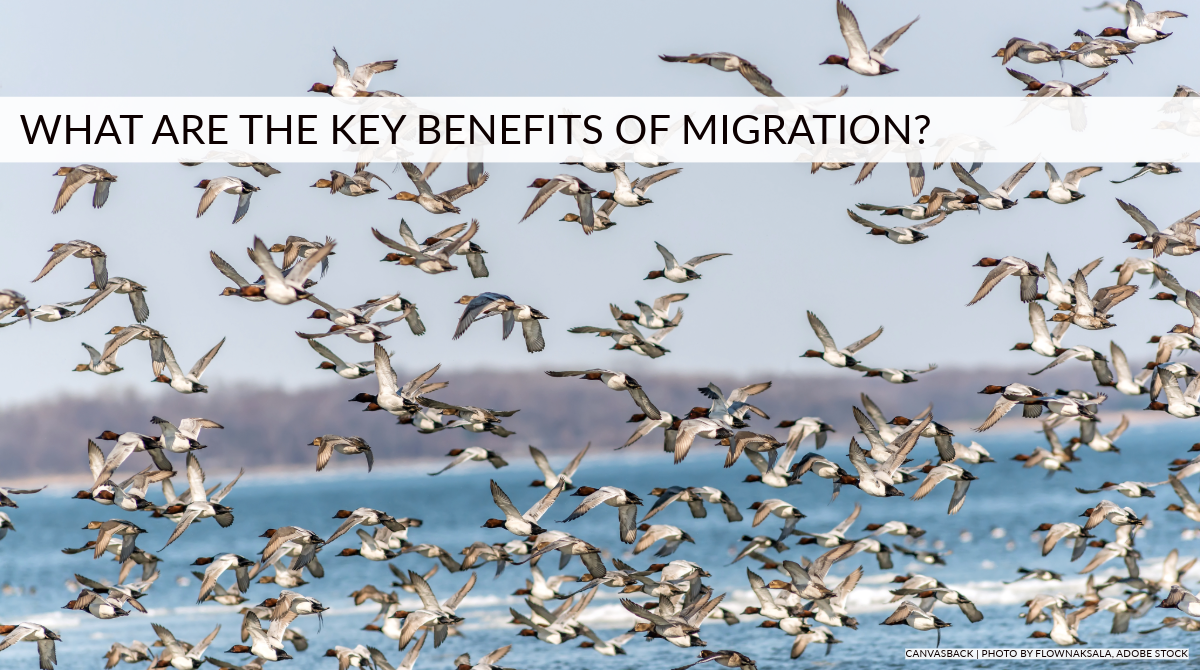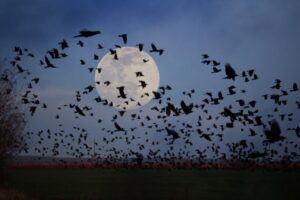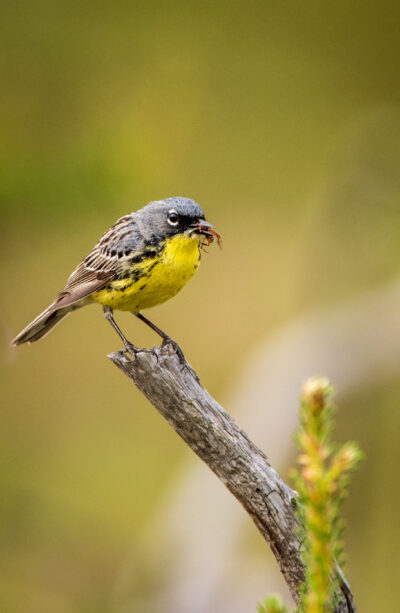Every year, we experience the phenomenon of migration — twice, in fact. But year after year, the change of seasons is shifting. Spring comes early, and fall comes late. What does this mean for migratory birds? What does this mean for us? The environment? In order to understand its impacts, first, we need to understand what migration is. The Cornell Lab of Ornithology describes migration as “periodic, large-scale movements of populations of animals.”1
It is easy for us to believe that birds migrate due to temperature changes, but in reality, as long as there are enough resources, most birds can survive the change in seasons. So why do they migrate if not to escape the cold? The most important reason is the reduction in resources. As the days get colder, the natural food sources (insects, seeds, etc.) start to disappear, and birds head for warmer climates to overwinter. Birds that migrate north for breeding season experience adequate nesting resources, as well as an ideal match to food sources. Studies have shown that migratory birds can raise more young by moving north and enjoying longer days compared to their relatives who stay in the southern hemisphere during North America’s summer.
Some species migrate thousands of miles year after year, such as the Wood Duck or Rose-breasted Grosbeak. But how do they know where they are going? Evidence indicates birds can navigate through multiple methods. Most migratory birds fly at night, when the sky is clear, because they can track their progress with visual landmarks, such as mountains and bodies of water. They are also believed to follow the star patterns, marking their trek with familiar groupings. John and Stephen Emlen studied the effect of changing star locations on migratory birds in the 1960s.2 Using caged Indigo Buntings, with blank paper on all sides of the cages and ink on the birds’ feet, the Emlens used a planetarium in order to be able to change the locations of the stars. As the star patterns moved, so did the birds’ take-off direction in order to follow the patterns. Perhaps most interestingly, birds seem to be able to “‘see’ Earth’s magnetic field lines and use that information to chart a course between their breeding and wintering grounds.”3
Once they’re off, it’s not all smooth sailing. As we have all experienced, early spring can bring unpredictable weather. Migrating birds have to pause their trip when they encounter high winds and storms. Of course, these pauses lengthen their trip and they may risk missing resources. Additionally, a bird’s internal compass may be thrown off by space storms, which disrupt the earth’s magnetic field.4 These situations may cause what we know as vagrancy, when a bird inadvertently ends up out of their normal range.
Migration doesn’t only benefit the birds; it plays a significant part in local ecosystems. Most notably, birds are one of our primary pollinators. As flowers emerge in the spring, the birds can feast on the nectar and spread the pollen. Additionally, humans benefit from the insect control birds provide. Birds derive much of their protein from some of the earliest insects to hatch. They also play a part in the local food chain by becoming a meal for other wildlife. All of this gets thrown out of balance if migration occurs too early or late. If the flowers start to bloom before the birds return, pollination will be lessened, and food sources for other organisms suffer. Birds also run the risk of missing the hatching of the most beneficial insects. With this, they risk running out of food before their nesting season ends. Due to the changes, a study in 2019 concluded that migratory birds are arriving about one to two days earlier per decade.5
WHAT YOU CAN DO FOR MIGRATING BIRDS
Migratory birds are facing a crisis as their numbers decline.6 But there are things you can do to help the birds once they reach your backyard, whether using it as a stopover or making it home for the season.
- Keep your cats inside or restrained. Using a harness or building a “catio” is a great option for keeping both cats and birds safe.
- Ensure your windows are bird-friendly by breaking up the reflection with blinds, window tape, or decals.
- Reduce your use of pesticides. When birds ingest insects that have been killed with pesticides, the poison can also cause the birds to become sick.
- Plant Michigan native plants in your yard to encourage the best match of bird and plant.
While we all may appreciate migration for the opportunity to see some exciting species, it plays a much larger role in our world, with all kinds of variables. You can watch migration predictions and trends with BirdCast and eBird’s Status & Trends tracker. Happy birding!
by Carolyn Fabro, Education & Events Coordinator
REFERENCES
1 “The Basics of Bird Migration: How, Why, and Where,” Cornell Lab
2 “How Do Birds Navigate During Migration?” American Bird Conservancy
3 “How Migrating Birds Use Quantum Effects to Navigate,” Scientific American
4 “When Birds Get Lost, Space May Be to Blame,” National Audubon
5 “Phenology of Nocturnal Avian Migration Has Shifted ate the Continental Scale,” Nature Climate Change
6 “3 Billion Birds Gone,” American Bird Conservancy
“Spring is Starting Earlier – It’s Not Your Imagination,” Scientific American
“Shifting Timelines: is a Warming World Changing how Birds Migrate?” Audubon Vermont
“Climate Patterns Thousands of Miles Away Affect US Bird Migration,” NASA

Carolyn Fabro: Education & Events Coordinator
Carolyn joins Michigan Audubon with nearly 10 years of event planning experience. Prior to joining the team, she was behind the many events held at Potter Park Zoo, where she developed a passion for conservation. She enjoys sharing that passion with others and strives to make every event memorable for the guests. Carolyn treasures being with her husband, two kids, and many pets in her free time and enjoys reading and crocheting.



